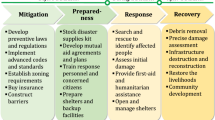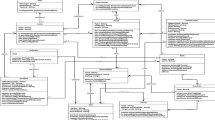Abstract
Critical infrastructures (CI) are difficult to handle due to their complexity, size and the number of stakeholders involved. During emergency situations (e.g. fire or terrorist attack), a CI operator in the control room is faced with a flood of information coming from different sensors and legacy monitoring systems. Since in these situations, time is critical and the operators are under a great deal of pressure, a holistic management of all the technical systems and actors involved is needed, reinforced by the Recommendation and Decision Support System (RDSS) that helps emergency managers to take correct and timely decisions. One way to provide an adequate RDSS support to the operator is proposed in this paper which is based on an intelligent, event driven layer that sits on top of the legacy CI monitoring system. Powered by the complex event processing capabilities and facility data model implemented in the form of CI ontology, this layer processes events originating from different sources, conducts the situation and risk assessment, and reacts accordingly, either automatically or via recommendations proposed to emergency personnel. To validate the proposed approach, an event-driven RDSS was deployed on an airport use case (Nikola Tesla airport in Belgrade), as one of the most complex CIs.
Similar content being viewed by others
References
Ahuja S.P., Patel A (2011). Enterprise service bus: A performance evaluation. Communications and Network 3(3): 133–140.
Anagnostopoulos C., Hadjiefthymiades S (2013). Multivariate context collection in mobile sensor networks. Computer Networks, 57(6): 1394–1407.
Anfar S (2014). WSO2 ESB performance round 7.5, http: //wso2.com/library/articles/2014/02/esbperformance–round–7.5/
Benaben F., Hanachi C., Lauras M., Couget P., Chapurlat V (2008). A metamodel and its ontology to guide crisis characterization and its collaborative management. 5th International ISCRAM Conference, Washington, DC, USA, 189–196.
Bettelini M., Rigert S., Seifert N (2013). Optimum emergency management through physical simulation–Findings from the EMILI research project. World Tunnel Congress, Geneva, pp. 290–297.
Bharosa N., Lee J., Janssen M (2010). Challenges and obstacles in sharing and coordinating information during multi–agency disaster response: Propositions from field exercises. Information Systems Frontiers, 12(1): 49–65.
Braut G.S., Rake E.L., Aanestad R., Njå O (2012). Risk images as basis for decisions related to provision of public services. Risk Management, 14(1): 60–76.
Büscher M., Liegl M., Thomas V (2015). Collective intelligence in Crises. Social Collective Intelligence: Combining the Powers of Humans and Machines (243–265), Springer.
Campbell B.D., Mete H.O., Furness T., Weghorst S., Zabinsky Z (2008). Emergency response planning and training through interactive simulation and visualization with decision support. IEEE Conference on Technologies for Homeland Security, Waltham, MA, 176–180.
Chen R., Sharman R., Rao H. R., Upadhyaya S. J (2008). Coordination in emergency response management. CACM, 51(5): 66–73.
De Maio A., Fenza G., Gaeta M., Loia V., Orciuoli F (2011). A knowledge–based framework for emergency DSS. Knowledge–Based Systems, 24(8): 1372–1379.
Dunkel J., Fernández A., Ortiz R., Ossowski S (2011). Event–driven architecture for decision support in traffic management systems. Expert Systems with Applications, 38(6): 6530–6539.
Endsley R (1995). Towarda theory of situation awareness in dynamic systems: Situation awareness. Human Factors, 37: 32–64.
Endsley M.R., Connors E.S (2008). Situation awareness: State of the art. Power and Energy Society General Meeting: Conversion and Delivery of Electrical Energy in the 21st Century, Pittsburgh, PA, USA, 1–4.
Etzion O., Niblett P (2011). Event Processing in Action, Manning Publications Co., Stamford.
Fan Z., Zlatanova, S (2010). Exploring ontology potential in emergency management. Gi4DM Conference–Geomatics for Disaster Management, Torino, Italy, 109–122.
Franke J., Charoy F., Ulmer C (2011). Handling conflicts in autonomous coordination of distributed collaborative activities.20th IEEE Conference on Collaboration Technologies and Infrastructures (IEEE WETICE 2011), Paris, France, 319–326.
Fogli D., Guida G (2013). Knowledge–centered design of decision support systems for emergency management. Decision Support Systems, 55: 336–347.
Harrald J., Jefferson T (2007). Shared situational awareness in emergency management mitigation and response. 40th Hawaii International Conference on System Sciences (HICSS 2007), Waikoloa, Big Island, HI, USA, 23–30.
Hausmann S., Brodt S., Bry F (2011). Dura: Concepts and Examples. Technical Report, University of Munich.
Hausmann S., Bry F (2013). Towards complex actions for complex event processing. 7th ACM International Conference on Distributed Event–based Systems (DEBS 2013), Arlington, Texas, USA, 135–146.
Hernández J.Z., Serrano J.M (2001). Knowledge–based models for emergency management systems. Expert Systems with Applications, 20(2): 173–186.
ICAO (2004). Aerodromes–Annex 14 to the convention on international civil aviation. ICAO International Standards and Recommended Practices(4 ed). http: //www.icao.int/
IEC (2003). IEC 61970: Energy management system application program interface–Part 451: CIS information exchange model for SCADA, International Electrotechnical Commission.
Janev V., Mijović V., Tomašević N., Kraus, L., Vraneš S (2012). Dynamic workflows for airport emergency management training. 23rd International Workshop on Database and Expert Systems Applications (DEXA 2012), Vienna, Austria, 5–9.
Kostas K., Panagidi K., Hadjiefthymiades S (2013). Optimal spatial partitioning for resource allocation. 10th International ISCRAM Conference, Baden–Baden, Germany, 747–757.
Kraus L., Stanojević M., Tomašević N., Mijović V (2011). A decision support system for building evacuation based on the EMILI SITE environment. IEEE 20th International Workshops on Enabling Technologies: Infrastructure for Collaborative Enterprises (WETICE 2011), Paris, France, 334–336.
Kraus L., Janev V., Vraneš S (2012). Different approaches to ICT–enhanced emergency management. 56th ETRAN Conference, Zlatibor, Serbia, VI2.7–1–4
Lauras M., Benaben F., Truptil S., Charles A (2015). Eventcloud platform to support decision–making in emergency management.Information Systems Frontiers, 17(4): 857–869.
Liu X., Li W., Tu Y.L., Zhang W.J (2011). An expert system for an emergency response management in networked safe service systems. Expert Systems with Applications, 38: 11928–11938.
Luckham D.C (2011). The power of events: An introduction to complex event processing in distributed enterprise systems, Addison–Wesley Longman Publishing, Boston.
Maciejewski R., SungYe K., King–Smith D., Ostmo K., Klosterman N., Mikkilineni A.K., Ebert D.S., Delp E.J., Collins T.F (2008). Situational awareness and visual analytics for emergency response and training. IEEE Conference on Technologies for Homeland Security, Waltham, MA, 252–256.
Malewski C., Simonis I., Terhorst A., Bröring A (2014). StarFL–a modularised metadata language for sensor descriptions. International Journal of Digital Earth 2014, 7(6): 450–469.
Mijović V., Vraneš S (2011). Asurvey and evaluation of CEP tools. 17th Conference and ExhibitionYUINFO,Kopaonik, Serbia, 638–642.
Mijović V., Janev V., Vraneš S (2013). Main challenges in using LOD in emergency management scenarios. 24th International Conference on Database and Expert Systems Applications (DEXA 2013), Prague, Czech Republic, 21–25.
Mitra K., Saguna, Ahlund, C (2014). A mobile cloud computing system for emergency management.IEEE Cloud Computing, 1(4): 30–38.
Monares Á., Ochoa S.F., Pino J.A., Herskovic V., Rodriguez–Covili J., Neyem A (2011). Mobile computing in urban emergency situations: Improving the support to firefighters in the field. Expert Systems with Applications, 38(2): 1255–1267.
Moulik S., Misra S., Obaidat M.S (2015). Smart–evac: Big data–based decision making for Emergency Evacuation. IEEE Cloud Computing, 2(3): 58–65.
Mühl G., Fiege L., Pietzuch P (2006). Distributed Event–Based Systems. Springer.
Nüst D., Janowicz K., Maué P., Bröring A., Malewski C (2011). Semantically–enabled sensor plug & play for the Sensor Web. Molecular Diversity Preservation International Sensors, 11(8): 7568–7605.
Pohl D., Bouchachia A., Hellwagner H (2013). Supporting crisis management via detection of sub–events in social networks. International Journal of Information Systems for Crisis Response and Management (IJISCRAM), 5(3): 20–36.
Qiu M., Ming Z., Wang J., Yang L.T., Xiang Y (2014). Enabling cloudcomputing in emergency management systems. IEEE Cloud Computing, 1(4): 60–67.
Sagun A., Bouchlaghem D., Anumba C. J (2009). A scenario–based study on information flow and collaboration patterns in disaster management. Disasters, 33(2): 214–238.
Tomašević N., Konečni G (2011). Generic message format for integration of SCADA–enabled emergency management systems. 17th Conference and Exhibition YU INFO, Kopaonik, Serbia, 71–76.
Tomašević N., Batić M., Konečni G., Vraneš S (2012). Ontology–based airport data model. 2nd International Conference on Information Society Technology ICIST, Kopaonik, Serbia, 158–163.
Vraneš S., Stanojević M., Janev V., Tomašević N., Mijović, V (2010). EMILI deliverable D6.3 "Design of the first prototype of the integrated EMILI–SITE system".
Vraneš S., Stanojevic M., Janev V., Mijovic V., Tomasevic N., Kraus L., Ilic Z (2011). Application of complex event processing paradigm in situation awareness and management. 22nd InternationalWorkshop on Database and Expert Systems Applications(DEXA 2011), Toulouse, France, 289–293.
Vraneš S., Stanojević M., Janev V., Tomašević N., Mijović V., Kraus L (2013). EMILI Deliverable D6.7 "Documentation and on–line tutorial".
Waugh W. L., Streib G (2006). Collaboration and leadership for effective emergency management. Public Administration Review, 66: 131–140.
Author information
Authors and Affiliations
Corresponding author
Rights and permissions
About this article
Cite this article
Mijović, V., Tomašević, N., Janev, V. et al. Emergency Management in Critical Infrastructures: A Complex-Event-Processing Paradigm. J. Syst. Sci. Syst. Eng. 28, 37–62 (2019). https://doi.org/10.1007/s11518-018-5393-5
Published:
Issue Date:
DOI: https://doi.org/10.1007/s11518-018-5393-5




